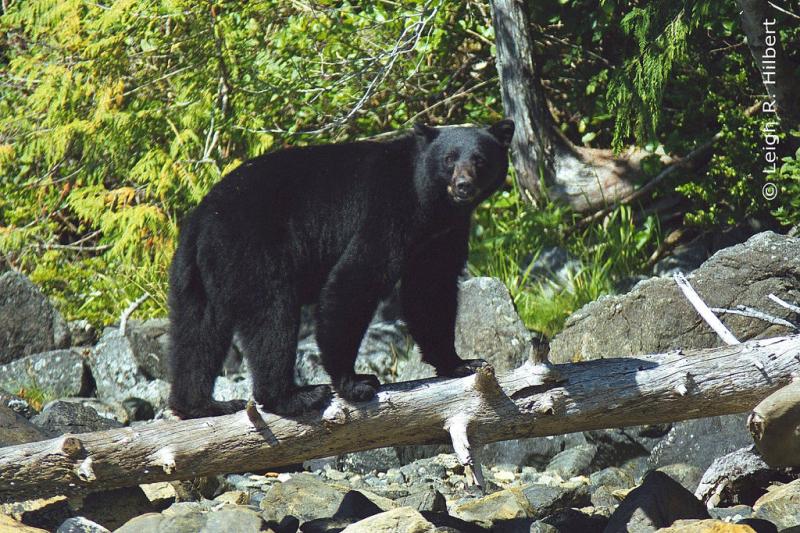Wildlife North America . com North American Animals - mamals, birds, reptiles, insects |
American Black Bear (Ursus americanus)
Black Bear photographed in Canada. Photograph by Klaus Berberich. Some rights reserved. (view image details) 
Black Bear, Vancouver Island, British Columbia, Canada Photograph by Leigh R Hilbert. Some rights reserved. (view image details) 
Black Bear with cubs. Alaska. Photograph by Mike Rushmore. Some rights reserved. (view image details) 
Black Bear cub being cared for at the Atlantic Wildlife Institute Photograph by Harold Jarche. Some rights reserved. (view image details)
AMERICAN BLACK BEAR FACTS
DescriptionBlack Bears are usually black with brown muzzles. However they are not all black. Some are dark brown or pale brown, and some in southern Alaska and British Columbia are creamy white or gray. Most Black Bears hibernate for up to seven months, and do not eat, drink, urinate, or exercise the entire time. In warmer climates further south, some bears do not hibernate. Pregnant females always hibernate before giving birth. Other Names Olympic Black Bear, Glacier Bear, California Black Bear, Florida Black Bear Size Length: males 1.4m - 2m, females 1.2m-1.6m. Weight: males 47-409kg (average 120kg); females 39 - 236kg (average 80kg) Environment forest and woodland with thick understorey vegetation. Also meadows, roadsides, subalpine ridges. Food mainly fruit, nuts, and vegetation, also insects. They eat some meat usually as carrion, but are not active predators of vertebrates. Breeding The mother gives birth to 1-6 cubs (usually 2 or 3) in January while she hibernates in her den. The cubs nurse while the mother sleeps. They weight 200-450g at birth and grow to 2-5kg when they leave the den. Range Alaska, most of Canada and much of United States into Mexico. Classification
Relatives in same Genus Brown Bear (U. arctos) Polar Bear (U. maritimus) Home | Mammals | Reptiles | Birds | Insects | Privacy Policy | Disclaimer | Contact Us |